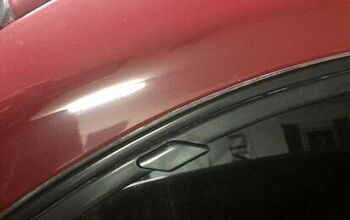Piston Slap: Stumped by Starter Woes?

Bob writes:
Dear Sajeev,
I have a 1996 Nissan Pathfinder that I bought new and has since accumulated 90,000 miles . I plan on driving it until it dies because I still enjoy it and it gets me to all the great fishing spots, plus I have a “fun” car in the garage (’74 TR6) for when the weather is nice. My issue is about the starter (I think) on the Pathfinder.
The starter went out on it a couple years ago, so I bought a remanufactured one and replaced it myself. It was a much harder job than I thought due to the very tight space. The starter worked in the beginning then became sporadic after about six months. I would turn the key and only get a “click”, turn the key again and again and eventually it would turn over and start.
This time I took it to a mechanic, told them the issue and they thought the starter I put in was bad so I had them replace it with a new OEM. It too worked great for the first year or so before same issue arose. Seventy percent of the time when I turn the key it starts right up. The other 30 percent of the time when I turn the key I get a “click” or a very slow turnover of the starter, almost as if the battery was low on charge. One or two more tries and it starts right up.
I replaced the battery last year and it is strong, cleaned all of the terminals and checked the Pathfinder sites for others with this issue but seem to have hit a dead end. I would appreciate your thoughts on the matter.
Sajeev answers:
Hmm, this is tough to kick over and run to a solution! This link has great info, in theory. And this one is specific to your application (probably).
I bet there’s a voltage drop from the battery to the starter (starter solenoid, actually) from a corroded power cable. 1996 was a long time ago and that wire has seen plenty of work, even if the odometer suggests otherwise!
I was shocked at how my (then-12-year-old) 1988 Cougar started faster and gained almost 0.5 more volts at idle when switching from factory battery cables to stupid-massive 1/0 gauge cable from my local CarQuest. The cables looked okay, but removing the negative one from the engine block showed the big reason behind my charging problems: plenty of corrosion inside the wire bursting out the insulation like a teenager’s pimple.
Methinks you must follow my lead. Inspect the cable from the battery to the starter. You probably won’t like what you see.
Send your queries to sajeev@thetruthaboutcars.com. Spare no details and ask for a speedy resolution if you’re in a hurry…but be realistic, and use your make/model specific forums instead of TTAC for more timely advice.

More by Sajeev Mehta
Latest Car Reviews
Read moreLatest Product Reviews
Read moreRecent Comments
- ToolGuy "I have my stance -- I won't prejudice the commentariat by sharing it."• Like Tim, I have my opinion and it is perfect and above reproach (as long as I keep it to myself). I would hate to share it with the world and risk having someone critique it. LOL.
- SCE to AUX Sure, give them everything they want, and more. Let them decide how long they keep their jobs and their plant, until both go away.
- SCE to AUX Range only matters if you need more of it - just like towing capacity in trucks.I have a short-range EV and still manage to put 1000 miles/month on it, because the car is perfectly suited to my use case.There is no such thing as one-size-fits all with vehicles.
- Doug brockman There will be many many people living in apartments without dedicated charging facilities in future who will need personal vehicles to get to work and school and for whom mass transit will be an annoying inconvenience
- Jeff Self driving cars are not ready for prime time.


































Comments
Join the conversation
Thanks Sajeev and the Best & Brightest, the first dry weekend we have I will start checking the battery cables and test the relay. Also you almost nailed the Pathfinder with your picture, exact same model (with the external spare) but in the blue/purple color...
Lots of good areas to check have been mentioned: Starter, contacts in solenoid; battery and ground cables, corrosion, loose, etc. Starter relay. Ignition switch. One not heard from yet: Charging system. Check that the battery is getting fully charged. Check with good voltmeter at the battery itself. ND alternators are usually good at giving the required 14.5 VDC to the battery, but sometimes the terminals/cables to battery connections are not good due to corrosion. There can also be trouble with the wiring from the alternator to the battery. Sometimes the cables/connections look okay, but have the dreaded "black wire disease" when the insulation is peeled back. If you have enough slack in the harness new terminals and cutting back to clean copper will fix it. A battery that is slightly low on charge voltage can lead to problems like this. Having the workshop manual is good because you can find out how things were supposed to be originally. I've run into cars/trucks where the OE battery ground cable was a "Y". One leg went to the engine/trans and the other to the body. It had been replaced with a generic autoparts store single cable. This caused all sorts of electrical gremlins. Check for missing, broken, or corroded cables from engine to trans, frame to trans, and battery to frame/trans/engine.